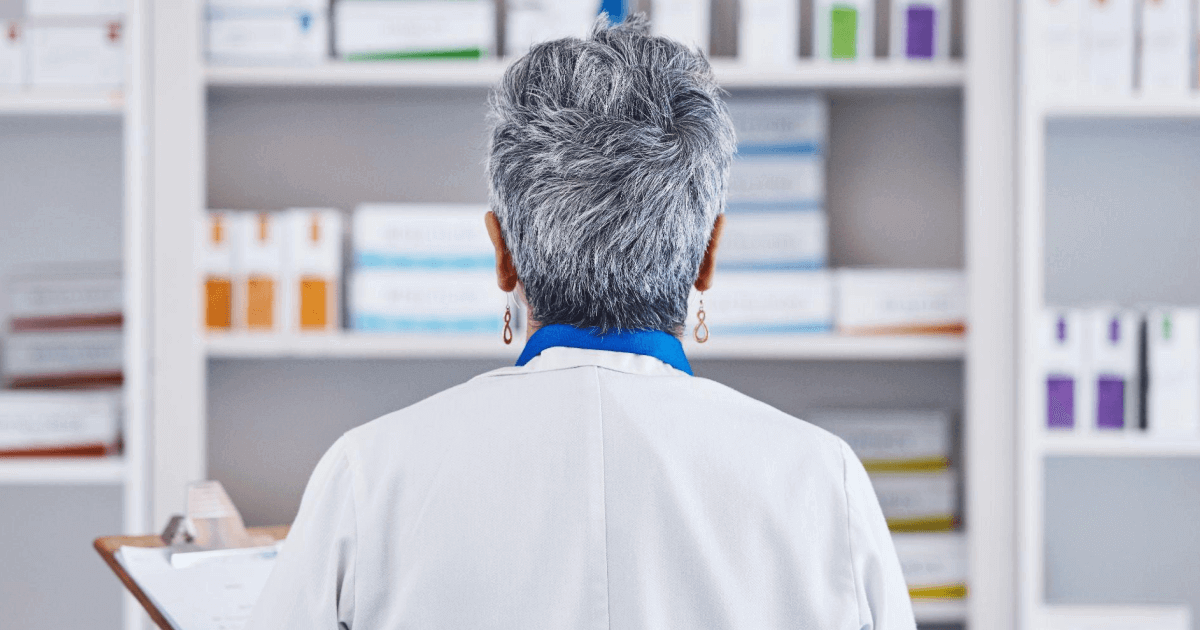
- Drug Shortages and 503B Facilities: Solutions and Strategies
- Drug Shortages: Beyond the Numbers
- Managing Supply Chain Challenges During Supplier Disruptions
- The Direct and Indirect Costs to Hospitals
- Unpacking 503B Compounding Pharmacies
- Speed and Efficiency: How 503B Facilities Respond to Urgent Needs
- The 503B Advantage: Quality, Safety, and Cost-Effectiveness
- Future-Proofing Against Drug Shortages
- Conclusion and Action Points
- References
Drug Shortages and 503B Facilities: Solutions and Strategies
In healthcare, few challenges are as critical as drug shortages. A recent study conducted by the American Society of Health-System Pharmacists (ASHP) paints a concerning picture: 99% of 345 respondents reported negative impacts from shortages of critical drugs within the past year.1 These shortages, particularly affecting medications commonly used in anesthesiology and pain medicine, have intensified due to supply chain disruptions and workforce challenges within the industry. As of the second quarter of 2023, there were 309 active drug shortages, approaching an all-time high of 320, the highest total in nearly a decade.2 In response, 503B compounding facilities emerge as vital solutions.
503B facilities operate under strict regulatory oversight, ensuring top-notch quality and safety standards in medication production. They play a pivotal role in rapidly addressing critical medication shortages - providing a lifeline to patients and healthcare providers. In this article, we explore the causes and consequences of drug shortages, the direct impact on hospitals, and the crucial role of 503B facilities.
Drug Shortages: Beyond the Numbers
While statistics highlight the severity and broad impact of drug shortages, the underlying factors extend across multiple dimensions. They are fueled by a complex interplay of raw material sourcing, supply chain disruptions, increased demand for specific medications, challenges for pharmaceutical manufacturers, and policy limitations. Indeed, natural disasters, transportation issues, geopolitical conflicts, and the global pandemic can also disrupt supply chains, and access to high-quality medications.
This complex interplay of factors creates a vicious cycle, and understanding the multifaceted nature of drug shortages is crucial for finding effective solutions. Collaboration between pharmaceutical companies, healthcare providers, policymakers, and 503B compounding facilities is essential. In the following sections, we explore how these facilities are uniquely positioned to mitigate drug shortages, offering a lifeline to patients in times of need.
Managing Supply Chain Challenges During Supplier Disruptions
In healthcare logistics, the focus often centers on the pivotal role played by suppliers. However, the pharmaceutical industry can be highly dynamic. When these essential components experience disruptions, it is the hospital systems and, more specifically, pharmacies that bear the brunt of the impact, including challenges in sourcing medications and managing inventory.
These disruptions expose a vulnerability in the pharmaceutical supply chain: anticipating supply chain interruptions. The sometimes-fragile nature of the U.S. drug and medical supply became evident as new drug shortages surged nearly 30% between 2021 and 2022, reaching a record high of 295 shortages by the end of 2022, some persisting for over a decade. The COVID-19 pandemic heightened this vulnerability, with Americans personally experiencing shortages of commonplace pain relievers and antibiotics.
In the face of these challenges, the value of a reliable contingency plan becomes evident. This is where 503B compounding facilities emerge as dependable solutions, offering swift responses to supply chain disruptions. They empower healthcare providers to ensure uninterrupted patient care, serving as steadfast partners during uncertain times. In essence, 503B compounding facilities provide a practical response to the hurdles faced by hospital systems and pharmacists when suppliers encounter disruptions.
The Direct and Indirect Costs to Hospitals
Drug shortages take a heavy toll on hospitals, straining pharmacy departments and exacerbating healthcare burnout, all while compelling clinicians to grapple with difficult decisions regarding patient care. These shortages not only compromise patient safety and public health but also impose substantial financial burdens on hospitals.
In a direct sense, drug shortages overwhelm pharmacy departments, where most shortage management falls, placing an immense burden on these critical units. This situation necessitates the exploration of solutions, whether through 503B outsourcing facilities or in-house preparations, further exacerbating healthcare burnout. Clinicians, too, wrestle with weighty decisions concerning patient care. According to ASHP's study1, 50% of survey respondents noted that shortages in basic sterile injectables, such as sterile water, flush syringes, local anesthetics, injectable narcotics, and certain heparin products, severely impacted their operations, with 7% reporting harm to patients.
Indirectly, hospitals grapple with significant financial repercussions. Recent data reveals that 90% of U.S. hospitals have faced drug shortages, leading to the need for costly medication alternatives and resulting in an estimated annual expenditure of $200 million. These costly alternatives, expedited sourcing, and resource-intensive inventory management strain budgets. Moreover, staff time diverted to manage shortages detracts from the core focus of patient care. While resolving drug shortages remains a complex challenge, 503B facilities emerge as indispensable allies in bridging the gaps with ready-to-administer sterile medications.
Unpacking 503B Compounding Pharmacies
503B compounding facilities are a unique and vital component of the pharmacy landscape, setting themselves apart from traditional compounding pharmacies in fundamental ways. Their distinguishing feature lies in the rigorous regulatory oversight they operate under. Established by the Drug Quality and Security Act of 2013, this framework ensures strict adherence to Current Good Manufacturing Practices (cGMP) guidelines. Consequently, medications produced in 503B facilities consistently meet the highest standards of quality and safety.
Moreover, 503B facilities serve as a reliable source of compounded medications, especially when facing the challenge of drug shortages. Their capacity to respond swiftly and efficiently during shortages provides critical access to essential treatments for patients and healthcare providers alike. This commitment to quality assurance, coupled with their ability to maintain a stable supply, positions 503B compounding pharmacies as invaluable allies in addressing the healthcare industry's pressing needs.
Speed and Efficiency: How 503B Facilities Respond to Urgent Needs
503B facilities are renowned for their remarkable speed and efficiency in addressing drug shortages. When a crucial medication is listed on the FDA shortage list, these facilities can spring into action, ramping up production in a mere 5-6 weeks.
To illustrate their capabilities, consider the case of Dextrose, where 50% of prefilled syringes have been in a critical shortage for some time now. This drug is used for a host of emergency situations such as hypoglycemia, dehydration, acute alcohol poisoning, high potassium levels, or as a carbohydrate in parenteral nutrition. During this recent shortage, many hospitals are having to make do with either reduced or zero order fulfillment from their wholesalers.
QuVa Pharma sought to fill this shortage gap and launched their Dextrose offering in 2022, providing dextrose inventories for many large hospital systems that had completely lost their access to the drug.
Such agility and responsiveness underscore the indispensable role of 503B facilities in safeguarding patient health during times of scarcity.
The 503B Advantage: Quality, Safety, and Cost-Effectiveness
503B compounding pharmacies have emerged as critical players in easing the burdens created by drug shortages. Facilities like QuVa Pharma, offer more than just a stop-gap solution. They provide a resilient and reliable source of essential medications, addressing multi-faceted causes of shortages, including raw material problems, supply and demand issues, and manufacturing challenges. Unlike traditional pharmacy settings, today's 503B facilities operate as sophisticated production operations, capable of producing medications at scale, often challenging to compound in-house. Their FDA registration, regulation, and adherence to cGMP standards ensure high-quality, ready-to-administer drugs with extended shelf lives, reducing hospital waste and safeguarding patient care.
Future-Proofing Against Drug Shortages
Addressing drug shortages requires a proactive approach aimed at future-proofing our healthcare systems. Innovative, long-term solutions and policies are essential. Several key strategies emerge as the foundation for a comprehensive approach:
- Technological Advances: Embracing cutting-edge technology can enhance the monitoring and prediction of drug shortages. Advanced data analytics and artificial intelligence can help healthcare systems anticipate shortages, enabling timely interventions and resource allocation.
- Transparent Supply Chains: Advocating for greater transparency in pharmaceutical supply chains is critical. Improved visibility into the manufacturing and distribution processes can identify vulnerabilities and streamline the flow of medications, reducing the risk of shortages.
- Diversified Sourcing: Healthcare systems can mitigate shortages by diversifying their sourcing strategies. Relying on a broader range of suppliers and manufacturers can provide resilience in the face of disruptions.
- Collaborative Partnerships: Building strong collaborations among healthcare stakeholders, including pharmaceutical companies, compounding pharmacies like 503B facilities, and regulatory agencies, fosters a collective response to shortages.
By embracing proactive strategies, we can enhance our ability to respond to drug shortages effectively, ensuring uninterrupted access to vital medications for all patients.
Conclusion and Action Points
Drug shortages pose a significant dilemma with multi-faceted causes, including supply chain disruptions, policy limitations, and unanticipated surges in demand. 503B compounding facilities stand as crucial allies in bridging the gaps, offering consistent quality, safety, and swift responses to shortages. By supporting and collaborating with 503B compounding facilities, we can fortify our healthcare systems against the challenges of drug shortages, ensuring uninterrupted access to essential medications for patients.
Understand how QuVa is a premier 503B sterile compounding partner.
References
Words Cited- Severity and Impact of Sterile Injectable Drug Shortages. American Society of Health-System Pharmacists (ASHP) Survey. March, 2022.
- Drug Shortages Not Only Exacerbate Healthcare Burnout But Can Also Harm Patient Care. MedCityNews. Adams, Katie. August 15, 2023.
- New Product Development: Innovating to meet your clinical needs
- New drug shortages in the US increased nearly 30% in 2022, Senate report finds.” Christensen, Jen. CNN Health. March 22, 2023.

